advocacy
It’s time to get clear on a language strategy for your child so that you can consistently practice language in your home and watch your child’s communication soar in less time!
Welcome!
I want to show you how to build better language skills at home so you can also parent with clarity and confidence!
Categories
hearing loss
sensory activities
sign language
1:1 Language Coaching
These are the kinds of resources that you will find on my blog!
Happy reading!
Sensory Play With Sand For Babies 6-12 Months
June 29, 2023
Sensory play with sand is an incredibly beneficial sensory activity for babies 6-12 months. This type of play not only allows babies to explore the world through their senses, but it also aids in their cognitive, physical, and emotional development.
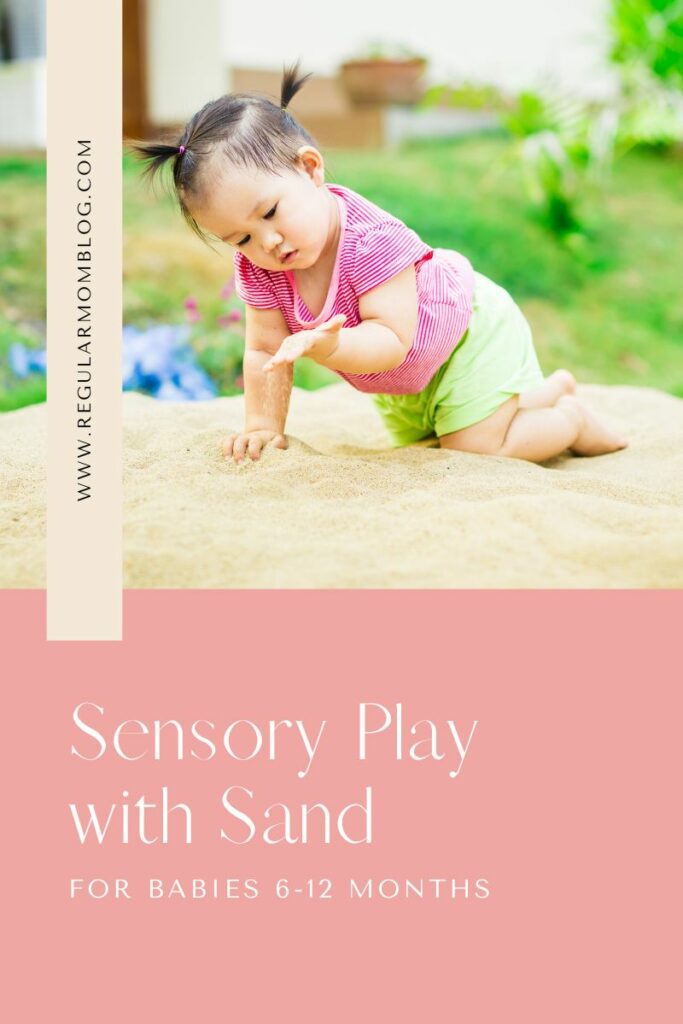
Sand is a particularly ideal material for sensory play due to its texture. It’s an excellent tool to encourage exploration and experimentation in babies!
Through sensory play with sand, babies can develop fine motor skills, hand-eye coordination, and creativity. They also learn about cause and effect through scooping and pouring the sand.
In this article, we will discuss the benefits of sensory play with sand, different types of sand used for this activity, how to introduce it to babies, and activities that can enhance the sensory experience.
Understanding Sensory Play with Sand
Language Benefits to Sensory Play With Sand
Sensory play with sand offers a wealth of benefits for your baby!
Research shows that playing with sand can improve fine motor skills, hand-eye coordination, and even enhance language development as babies describe (or sign) what they see and feel.
Babies learn best through hands- on activities, and sand is a perfect medium for your baby to build the foundational skills that will help them with other activities such as grasping a spoon or a pencil in the toddler and preschool years.
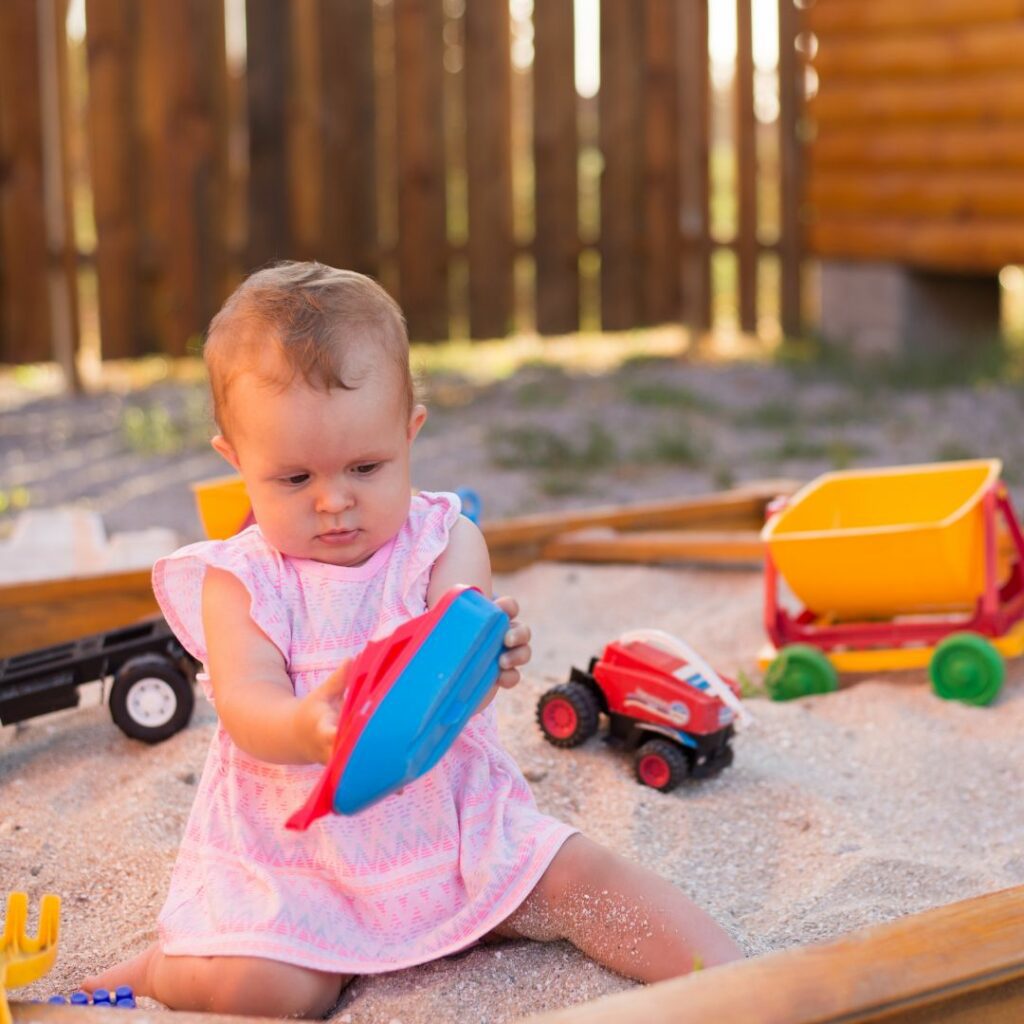
Since your baby is engaged in playing, it’s also an excellent time to work on speech and sign language goals!
You can practice words such as “scoop”, and “pour” and you can even make the vowels in those words longer and shorter to show your baby different ways to say them.
At the same time you can show your baby the sign for “sand” and the signs for “scoop” and “pour”.
Your baby is sure to pick up on the language practice quickly, as babies learn best when they are engaged with something interesting!
Choosing the Correct Sand
There are different types of sand that can be used to create a sensory experience that’s unique and memorable.
For instance, we can use kinetic sand, which is specially designed to stick to itself. This means that it won’t stick to clothing or skin as traditional sand does. It almost feels alive in your hand and easily moves and shapes!
My kids love kinetic sand, and I have to admit that I even love the sensory feeling of it as well! I also like that is sticks together and is easy to clean up.
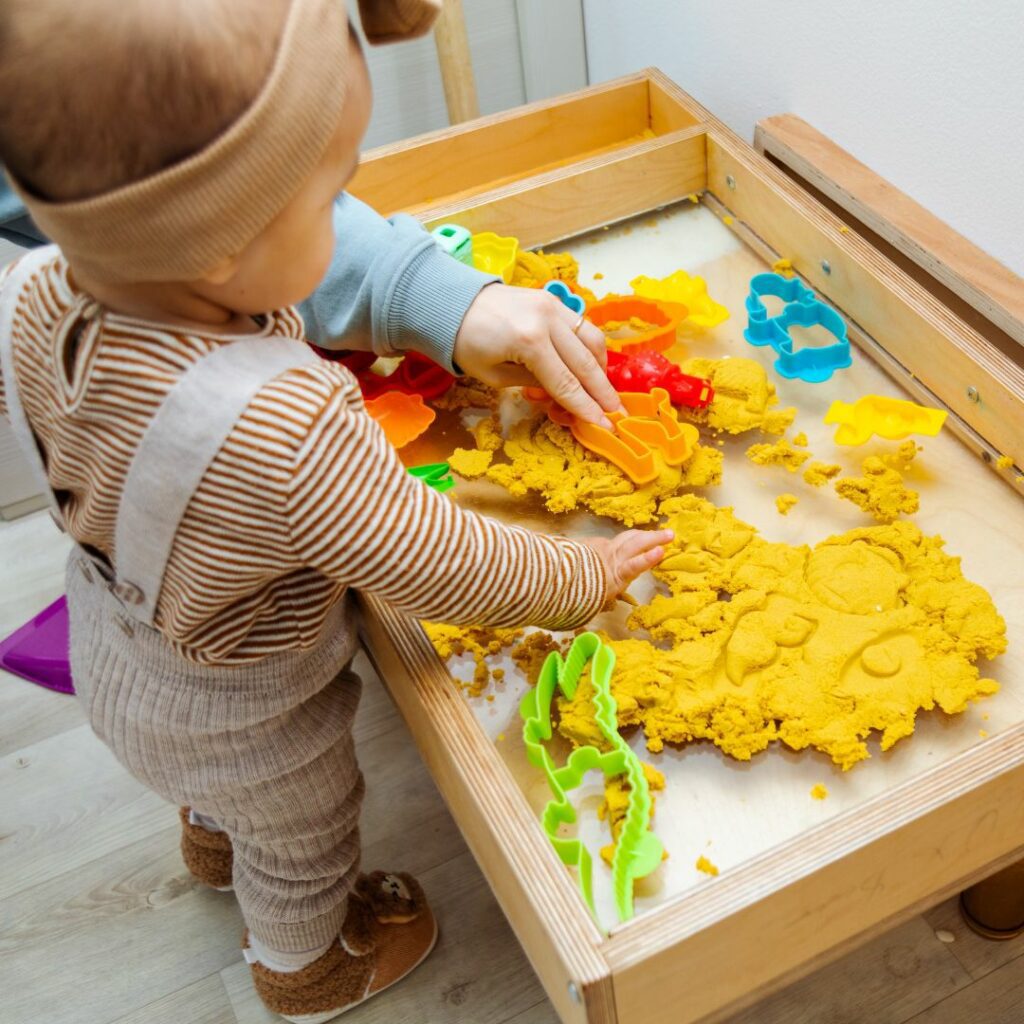
Colored sand is another option, which allows us to incorporate different colors for a more visually stimulating experience. This adds another level of engagement to sensory play because kids can mix and match different colors to create their own designs.
Moon sand, meanwhile, is incredibly moldable. This makes it perfect for sculpting and digging. This sand is ideal for building sand castles.
Whichever type of sand you choose, it’s sure to be engaging for your baby while also supporting their imagination!
How to Introduce Sensory Play with Sand to Babies
Best Location for Sensory Sand Play
Before you get started, it’s important to choose the best location for your sand play. This could be a designated sensory area in your home, or even an outdoor space if the weather permits. You also want to find a spot that’s easy to clean.
A designated play area, such as a plastic bin or a shallow infaltable pool, is perfect for containing the sand while allowing your baby to explore freely.
Recommended Toys and Tools for Sand Play
Once you’ve got your location sorted, it’s time to consider what toys and tools might be useful for your baby to play with. You could use a small sand tray, buckets, shovels, or even some molds to create fun shapes. I advise that you opt for objects that are safe for your baby to manipulate, such as shovels, cups, and sifters.
Tips for Sand Play with Babies
Not only is it a great way to stimulate their senses, but it can also aid in their physical development as they practice reaching, grasping, and even crawling on the sand.
When it comes to sand play with babies, there are a few tips to keep in mind:
- Start with a shallow container or play area to prevent your little one from accidentally ingesting sand.
- Make sure to choose the right kind of sand – you want something that’s clean, free of debris, and non-toxic.
- You can purchase special sand play sets specifically designed for babies, but a simple bucket and shovel will also do just fine.
- Make sure to supervise closely at all times, and never leave your little one unattended.
Remember, sand can be messy, so make sure your baby is wearing appropriate clothing!
Activities for Sensory Play with Sand for Babies
Digging and Scooping
Sensory play with sand is a great way to introduce babies to different textures and encourage their exploration skills.
One of the best activities for sand play is digging and scooping.
Babies love to use their little hands and explore the different depths of the sand!
By providing different sizes of scoops and shovels, you can encourage your baby to experiment with the tools and dig up hidden treasures.
Not only is this activity engaging and fun, but it also develops hand-eye coordination and fine motor skills.
Pouring and Filling
The simple act of pouring sand from one container to another helps improve hand-eye coordination and fine motor skills.
Filling a bucket with sand, and dumping it out again, helps babies learn cause and effect.
Plus, the different textures of the sand engages their senses and provides a calming sensory experience.
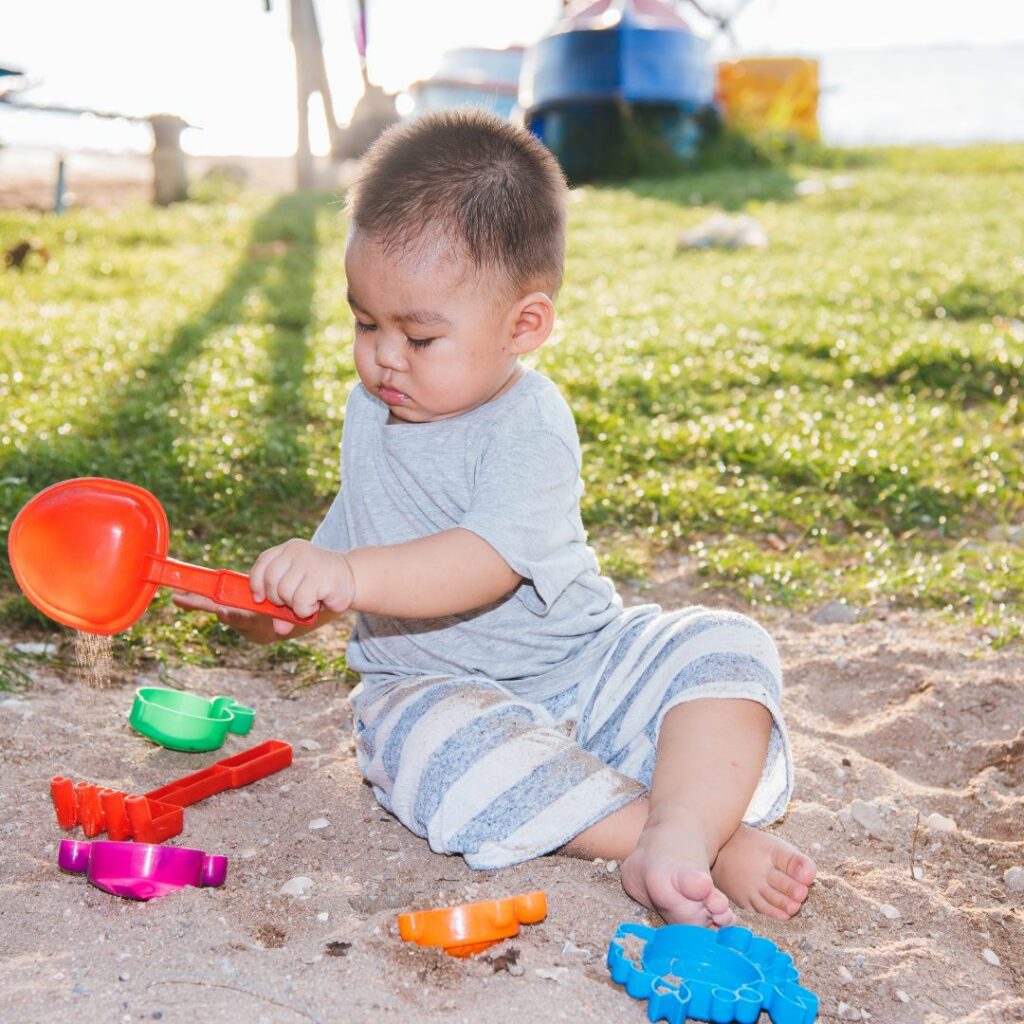
Making Sandcastles
One classic activity that babies love is making sandcastles!
With just a bucket, some sand, and some water, you and your baby can work together to build an impressive sandcastle kingdom.
As your little one builds up towers and molds shapes in the sand, they are not only having fun but also learning how to manipulate objects in their environment.
Not only will your baby love feeling the sand between their fingers, but they’ll also develop their fine motor skills and hand-eye coordination in the process.
Sensory Bins with Sand
One great activity for sensory play with sand is sensory bins.
Not only is it easy and affordable to set up, but it also provides endless opportunities for exploration and creativity.
You can add different objects and textures to the sand to encourage exploration, such as shells or small toys. I guarantee that you have some interesting things in your house right now that you could put into a sand sensory bin!
This is a unique activity to create a frozen sand sensory bin that would be ideal for spring and summer!
The options are endless when it comes to sensory bin themes: from beach scenes to desert landscapes to a bin that goes along with their favorite book or song.
Read about more creative ideas to create sensory bins with sand for babies on Little Bins for Little Hands.

Sensory play with sand is an excellent way to promote the cognitive and physical development of babies aged 6-12 months.
This type of play helps babies develop fine motor skills, hand-eye coordination, spatial reasoning skills. It also introduces them to different textures and sensations, which is especially important for babies with hearing loss.
Don’t forget to download your free Sensory Play Guide!
More Resources
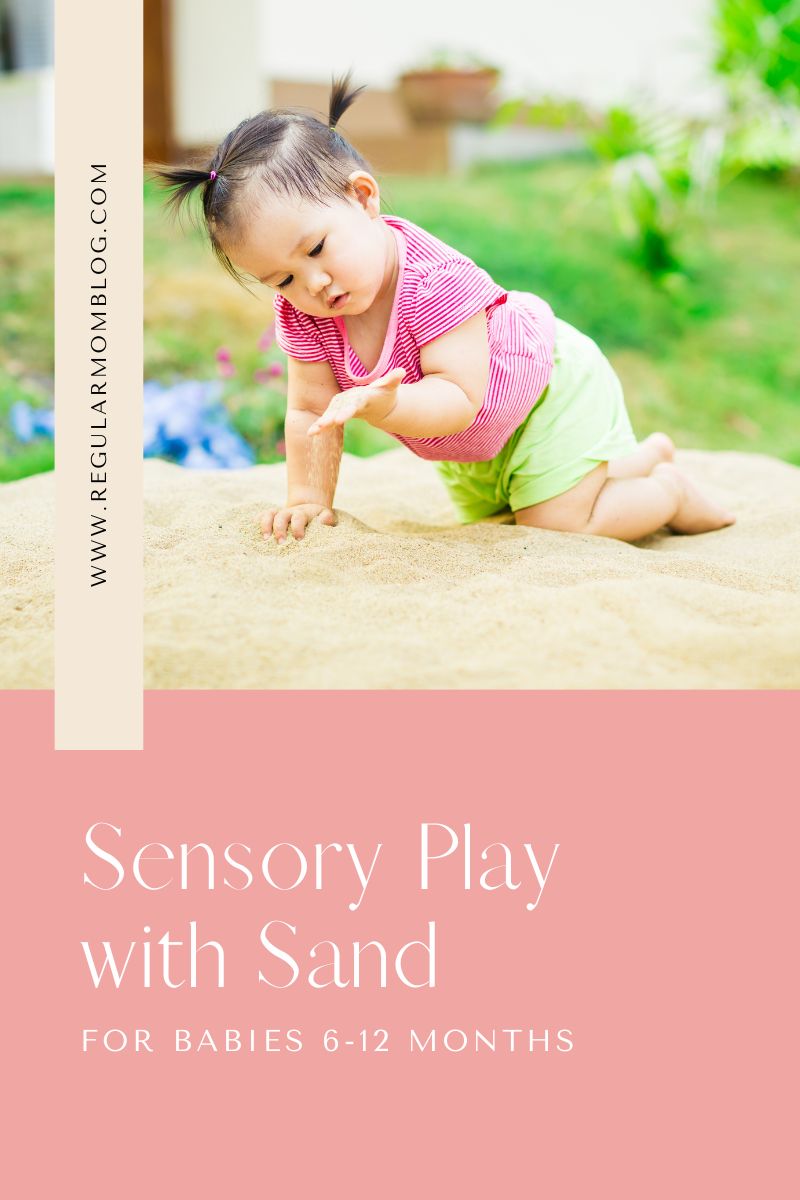
tell me more!
tell me more!
@alemerinobranding.co
DESIGNED BY: ALE MERINO BRANDING CO.
COACHING
Navigation
PODCAST
ABOUT
HOME
Legal
PRIVACY POLICY
TERMS & CONDITIONS
Let's connect
EMAIL hello@raisingdeafkids.com
BLOG